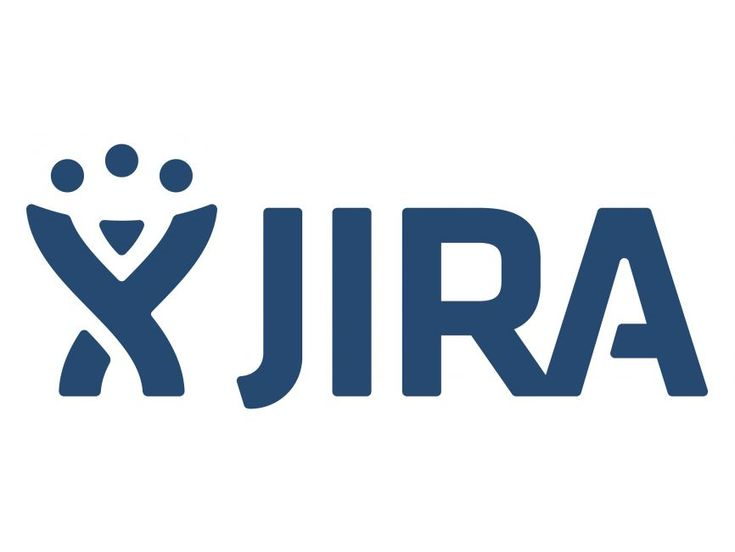A Project Manager’s Guide
World is one and we are closer to each other than ever. The modern business landscape has evolved into a global network where companies increasingly rely on geographically dispersed teams to achieve their strategic objectives. With the rise of remote work, digital collaboration tools, and global marketplaces, project managers now find themselves leading teams spread across multiple regions, time zones, and cultures. Managing multi-geographic teams presents a unique set of challenges but also offers opportunities for innovation, diversity, and efficiency.
In this interconnected world, the ability to manage a team that spans continents is not just a desirable skill but a necessity for many project managers. Successfully running such teams requires a deep understanding of the dynamics of remote work, cultural sensitivity, effective communication strategies, and a solid grasp of the technological tools that enable seamless collaboration across distances.
This article explores how project managers can navigate the complexities of multi-geographic team management. From establishing clear communication channels and leveraging technology to understanding cultural differences and building trust, we will delve into the best practices that can help ensure the success of geographically dispersed teams. We will also address potential pitfalls and challenges that can arise, offering practical solutions to overcome them.
In the following sections, we will discuss in detail the strategies that can help project managers lead multi-geographic teams effectively. We will explore how to set up efficient communication systems, manage time zones and work schedules, and foster a cohesive team culture despite the physical distance. Additionally, we will examine the role of leadership in building trust and accountability, and how to measure and manage performance across different regions.
Contents Curated For You
Successfully Run Multi-Geographic Teams.
Understanding the Dynamics of Multi-Geographic Teams.
Cultural Awareness and Sensitivity.
Communication: The Lifeblood of Multi-Geographic Teams.
Establishing Clear Communication Channels.
Regular Meetings and Check-ins.
Building Trust and Accountability.
Leveraging Technology for Seamless Collaboration.
Fostering a Cohesive Team Culture.
Recognizing and Celebrating Successes.
Navigating Challenges and Overcoming Obstacles.
Top 10 Principles for Successfully Managing Diverse Location Teams.
Ultimately, this guide aims to equip project managers with the knowledge and tools they need to thrive in the global business environment, ensuring that their multi-geographic teams are not only productive but also engaged and motivated. Whether you are leading a small team scattered across a few countries or a large, complex operation spanning multiple continents, the principles and practices outlined here will help you achieve your project goals while maintaining a strong and united team.
Understanding the Dynamics of Multi-Geographic Teams
Managing a team that operates across different geographic locations involves more than just coordinating tasks and deadlines. It requires an in-depth understanding of the dynamics that can influence team performance, such as cultural differences, communication barriers, and the challenges of working in different time zones.
Cultural Awareness and Sensitivity
One of the most significant aspects of managing multi-geographic teams is navigating cultural differences. Team members from different regions bring diverse perspectives, work ethics, communication styles, and problem-solving approaches. As a project manager, it is crucial to recognize these differences and leverage them as strengths rather than allowing them to become sources of conflict.
To build cultural awareness, project managers should invest time in learning about the cultural backgrounds of their team members. This includes understanding communication styles—some cultures may prefer direct communication, while others may favor a more indirect approach. Additionally, cultural norms around hierarchy and decision-making can vary significantly; in some cultures, decisions are made collaboratively, while in others, they are made by senior management.
Fostering an inclusive environment where all team members feel valued and understood is key to managing these cultural differences. Encouraging open discussions about cultural expectations and norms can help prevent misunderstandings and promote mutual respect. Moreover, incorporating cultural diversity into team-building activities can strengthen team cohesion and enhance collaboration.
Time Zone Management
Time zone differences can pose significant challenges for multi-geographic teams. Coordinating meetings, deadlines, and collaborative work across multiple time zones requires careful planning and flexibility. To manage these challenges effectively, project managers should establish clear guidelines for scheduling and communication.
One approach is to rotate meeting times so that no single region is consistently disadvantaged. This demonstrates consideration for all team members and helps maintain morale. Additionally, project managers can make use of asynchronous communication tools that allow team members to contribute to discussions and projects at times that are convenient for them. Tools like shared project management platforms, collaborative documents, and video recordings of meetings can bridge the gap between different time zones.

Clear communication about deadlines and expectations is also essential. Project managers should be mindful of time zone differences when setting deadlines and ensure that all team members have a fair amount of time to complete their tasks. Providing flexibility where possible and allowing team members to set their work hours can also improve productivity and satisfaction.
Communication: The Lifeblood of Multi-Geographic Teams
Effective communication is the cornerstone of successful multi-geographic team management. Without the ability to communicate clearly and efficiently, project managers cannot effectively coordinate tasks, resolve issues, or build a strong team culture.
Establishing Clear Communication Channels
The first step in ensuring effective communication is establishing clear channels through which team members can interact. These channels should be chosen based on the specific needs of the team, taking into account factors such as the size of the team, the complexity of the project, and the communication preferences of team members.
For real-time communication, tools like Slack, Microsoft Teams, or Zoom are essential. These platforms allow team members to interact through instant messaging, video calls, and shared files, enabling quick resolution of issues and facilitating collaboration. For asynchronous communication, email, project management tools like Asana or Trello, and shared documents on platforms like Google Drive are invaluable.
It is also important to establish protocols for communication. For example, team members should know when to use instant messaging versus email, how to handle urgent issues, and the expected response times for different types of communication. Clear guidelines help prevent misunderstandings and ensure that communication remains efficient and effective.
Regular Meetings and Check-ins
While asynchronous communication is vital for managing time zone differences, regular meetings and check-ins are equally important for maintaining team cohesion and ensuring that everyone is on the same page. These meetings provide an opportunity for team members to share updates, discuss challenges, and collaborate on problem-solving.

Project managers should schedule regular team meetings, taking care to consider the time zones of all participants. In addition to full team meetings, one-on-one check-ins with individual team members can help address specific concerns and provide personalized support. These meetings should be structured to maximize their effectiveness, with clear agendas, objectives, and follow-up actions.
It’s also important to create a safe space for team members to voice their opinions and concerns during these meetings. Encouraging open dialogue and active participation helps build trust and fosters a sense of belonging within the team.
Building Trust and Accountability
Trust is a critical component of any successful team, and it becomes even more important when managing multi-geographic teams. Without trust, team members may hesitate to share ideas, collaborate effectively, or take ownership of their tasks. As a project manager, building and maintaining trust within the team should be a top priority.
Setting Clear Expectations
One of the most effective ways to build trust and accountability is by setting clear expectations from the outset. This includes defining roles and responsibilities, establishing goals and objectives, and outlining the processes and procedures that the team will follow.
Clear expectations help prevent confusion and ensure that everyone knows what is expected of them. They also provide a basis for holding team members accountable for their performance. When expectations are communicated clearly, team members are more likely to take ownership of their work and strive to meet or exceed those expectations.
Encouraging Transparency
Transparency is another key factor in building trust within multi-geographic teams. Project managers should be open and honest in their communication, sharing information about project goals, timelines, and any potential challenges that may arise. This transparency should extend to all aspects of the project, including decision-making processes and performance evaluations.
Encouraging transparency among team members is equally important. This can be achieved by fostering a culture of openness, where team members feel comfortable sharing their thoughts, ideas, and concerns. Regular updates, progress reports, and feedback sessions can also promote transparency and keep everyone informed about the status of the project.
Promoting Accountability
Accountability is closely linked to trust, and project managers play a crucial role in promoting it within multi-geographic teams. This involves holding team members responsible for their actions and ensuring that they follow through on their commitments.
One way to promote accountability is by setting up a system for tracking progress and measuring performance. This can include regular check-ins, progress reports, and performance reviews. By consistently monitoring performance and providing feedback, project managers can ensure that team members stay on track and meet their objectives.

It’s also important to recognize and address any issues that may arise. If a team member is not meeting expectations, the project manager should address the issue promptly and work with the individual to identify the underlying cause and develop a plan for improvement.
Leveraging Technology for Seamless Collaboration
Technology plays a pivotal role in the success of multi-geographic teams. The right tools can enable seamless collaboration, streamline communication, and enhance productivity, regardless of where team members are located.
Choosing the Right Tools
The first step in leveraging technology is selecting the right tools for the job. With so many options available, it’s important to choose tools that meet the specific needs of the team and the project. Key considerations include ease of use, functionality, and integration with other tools.
For communication, platforms like Slack, Microsoft Teams, and Zoom are essential for real-time interactions. These tools offer features like instant messaging, video conferencing, and file sharing, making it easy for team members to collaborate in real-time.
Project management tools like Asana, Trello, and Jira are also invaluable for coordinating tasks, tracking progress, and managing deadlines. These platforms allow team members to see the status of tasks, assign responsibilities, and collaborate on projects, all within a single interface.
Collaboration tools like Google Workspace and Microsoft Office 365 enable teams to work together on documents, spreadsheets, and presentations in real-time. These tools also offer cloud storage, making it easy to access and share files from anywhere.
Implementing and Training
Once the right tools have been selected, it’s important to ensure that all team members are familiar with how to use them effectively. This may involve providing training sessions or resources to help team members get up to speed. It’s also important to establish guidelines for how the tools should be used, including best practices for communication, file management, and project tracking.
Regularly reviewing and updating these tools and practices is also important. As technology evolves, new tools and features may become available that can enhance the team’s productivity and efficiency. Staying up-to-date with the latest developments and being open to adopting new tools can give the team a competitive edge.
Fostering a Cohesive Team Culture
Building a cohesive team culture is challenging when team members are spread across different geographic locations. However, it is crucial for creating a sense of belonging, promoting collaboration, and ensuring that everyone is working towards the same goals.
Creating a Shared Vision
One of the most important aspects of building a cohesive team culture is creating a shared vision that all team members can rally around. This vision should align with the overall goals of the project and the organization and should be clearly communicated to the team.
Project managers should take the time to explain the purpose and objectives of the project, as well as how each team member’s work contributes to the overall success of the project. This helps create a sense of purpose and motivates team members to work together towards a common goal.
Encouraging Team Building
Team-building activities are essential for fostering a strong team culture, even when team members are located in different regions. While traditional team-building activities may not be feasible for multi-geographic teams, there are many virtual options that can be just as effective.
Virtual team-building activities can include online games, virtual coffee breaks, or collaborative projects that encourage team members to work together in a fun and informal setting. These activities help build relationships, improve communication, and create a sense of camaraderie among team members.
Recognizing and Celebrating Successes
Recognition and celebration of successes are important for maintaining morale and motivation within multi-geographic teams. Project managers should take the time to acknowledge the contributions of individual team members, as well as the team as a whole.
This can be done through regular feedback sessions, where team members are recognized for their hard work and achievements. Celebrating milestones, whether big or small, can also help keep the team motivated and focused on their goals.
Navigating Challenges and Overcoming Obstacles
Managing multi-geographic teams comes with its fair share of challenges. However, with the right strategies in place, these challenges can be effectively navigated, and obstacles can be overcome.
Addressing Language Barriers
Language barriers can be a significant challenge for multi-geographic teams, especially when team members are located in regions where different languages are spoken. To address this challenge, project managers should promote clear and concise communication and encourage team members to ask for clarification if they do not understand something.

Providing resources, such as translation tools or language training, can also help team members improve their language skills and communicate more effectively. Additionally, using visual aids, such as charts, diagrams, and presentations, can help convey information more clearly and reduce misunderstandings.
Managing Workload and Burnout
Managing workload and preventing burnout is another challenge for multi-geographic teams. With team members working in different time zones, there is a risk that some team members may end up working longer hours or taking on a heavier workload.
Project managers should monitor the workload of each team member and ensure that tasks are distributed fairly. It’s also important to encourage team members to take breaks and maintain a healthy work-life balance. Regular check-ins can help identify signs of burnout early and allow project managers to take action to address the issue.
Ensuring Consistency and Quality
Maintaining consistency and quality across different regions can be challenging, especially when team members are working independently. To address this challenge, project managers should establish clear standards and guidelines for quality and consistency.
Regular reviews and quality checks can help ensure that work meets the required standards. Providing feedback and coaching to team members can also help improve the quality of their work and ensure that it aligns with the overall goals of the project.
Top 10 Principles for Successfully Managing Diverse Location Teams
With all the info shared above and all said and done, let it be known that managing teams across diverse locations can be challenging, but with the right principles in place, it can lead to outstanding results. Here are the top 10 principles that can guide project managers in getting it right with diverse location teams:
1. Embrace Cultural Diversity
Cultural diversity is one of the most significant strengths of geographically dispersed teams. Different cultural backgrounds bring varied perspectives, creativity, and problem-solving approaches. To leverage this diversity, project managers should actively foster an inclusive environment where all cultural perspectives are respected and valued. This involves being aware of cultural differences in communication styles, work ethics, and decision-making processes, and integrating these differences into the team’s workflow.
2. Establish Clear Communication Protocols
Effective communication is the foundation of any successful team, but it’s especially crucial for diverse location teams. Project managers should establish clear communication protocols that define when and how team members should communicate. This includes setting expectations for response times, choosing the appropriate communication channels for different types of interactions, and ensuring that everyone is aware of the communication tools available. Regularly scheduled meetings and check-ins should also be part of the communication plan to keep everyone aligned.
3. Leverage Technology Wisely
The right technological tools can make or break a diverse location team. Project managers must select and implement technology that supports seamless collaboration across time zones and geographies. Tools for project management, communication, and file sharing should be easy to use, accessible to all team members, and integrated with one another. It’s also important to provide training on how to use these tools effectively and to ensure that they are regularly updated and maintained.
4. Foster Trust and Transparency
Trust is a critical element of any successful team, and it becomes even more important when team members are not co-located. Project managers should promote transparency in all aspects of the project, from decision-making to performance evaluations. This transparency helps build trust among team members, as everyone is aware of what is happening and why. Regular updates, open communication, and a culture of honesty are key to fostering trust in diverse location teams.
5. Set Clear Goals and Expectations
For a geographically dispersed team to function effectively, clear goals and expectations must be established from the outset. Every team member should understand their role, responsibilities, and how their work contributes to the overall project. Project managers should set measurable objectives and timelines and communicate these clearly to the entire team. Regularly revisiting these goals and providing feedback helps ensure that everyone stays on track and aligned with the project’s objectives.
6. Encourage Flexibility and Adaptability
Flexibility is essential when managing teams across different locations, particularly when dealing with varying time zones, work cultures, and local conditions. Project managers should encourage a flexible approach to work schedules, allowing team members to work at times that suit their local context while still meeting project deadlines. Being adaptable to changing circumstances, whether due to regional events or unexpected challenges, is also crucial for maintaining productivity and morale.
7. Promote Team Cohesion
Building a strong team culture is challenging when team members are scattered across different locations, but it’s not impossible. Project managers should invest in team-building activities that promote cohesion and camaraderie, even if they are virtual. Regular social interactions, whether through online games, virtual coffee breaks, or team challenges, can help build relationships and create a sense of belonging among team members.
8. Address Time Zone Challenges Proactively
Time zone differences can be one of the most significant obstacles to effective collaboration in diverse location teams. To manage this challenge, project managers should carefully plan meeting schedules and deadlines, ensuring that no single region is consistently disadvantaged. Using asynchronous communication tools and practices, such as shared documents and recorded meetings, allows team members to contribute and stay informed regardless of their time zone. Establishing core hours where all team members overlap can also be beneficial for real-time collaboration.
9. Provide Continuous Support and Development
Continuous support and professional development are important for keeping team members engaged and motivated. Project managers should regularly check in with team members to offer support, address concerns, and provide feedback. Additionally, offering opportunities for learning and development, such as training sessions, workshops, or mentoring programs, can help team members enhance their skills and feel more connected to the project and organization.
10. Monitor Performance and Celebrate Success
Monitoring performance across diverse locations can be challenging, but it’s essential for ensuring that the team is meeting its objectives. Project managers should establish clear metrics for success and regularly review progress against these metrics. It’s also important to celebrate achievements, both big and small, to maintain motivation and morale. Recognizing individual contributions and team successes helps reinforce positive behaviors and fosters a sense of accomplishment within the team.
By adhering to these principles, project managers can navigate the complexities of managing diverse location teams and harness the unique strengths that such teams offer. The result is a more cohesive, productive, and successful team that can achieve its goals despite the challenges of distance and diversity.
Conclusion
Managing multi-geographic teams successfully requires a combination of strategic planning, effective communication, cultural sensitivity, and strong leadership. By understanding the dynamics of geographically dispersed teams, project managers can implement strategies that promote collaboration, build trust, and ensure that the team works together towards common goals.
Leveraging technology is key to enabling seamless communication and collaboration, while fostering a cohesive team culture helps create a sense of belonging and motivation among team members. By addressing challenges head-on and promoting transparency, accountability, and quality, project managers can lead their multi-geographic teams to success.
Ultimately, the ability to manage multi-geographic teams effectively is a valuable skill that can enhance a project manager’s career and contribute to the success of the organization. As the global business landscape continues to evolve, this skill will become increasingly important, making it essential for project managers to continuously develop and refine their approach to managing geographically dispersed teams.
Best Reads






Thanks so much for providing individuals with such a wonderful chance to read articles and blog posts from this blog. It’s always so good plus jam-packed with amusement for me personally and my office co-workers to visit your site at a minimum 3 times in one week to find out the new guides you will have. And lastly, we’re always motivated concerning the superb thoughts served by you. Selected two points in this article are clearly the most impressive we have all had.